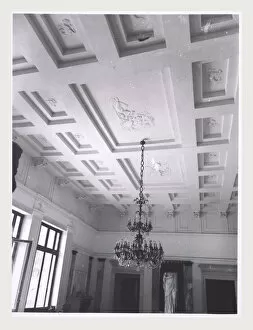Possible Nymphaeum Collection
"Unveiling the Mysteries of a Possible Nymphaeum in Lazio, Rome" Hidden amidst the enchanting landscapes of Lazio
For sale as Licensed Images
Choose your image, Select your licence and Download the media
"Unveiling the Mysteries of a Possible Nymphaeum in Lazio, Rome" Hidden amidst the enchanting landscapes of Lazio, Rome lies a captivating secret waiting to be discovered. Rumors swirl around the existence of a possible nymphaeum, an ancient Roman sanctuary dedicated to nymphs and water deities. As history buffs and archaeology enthusiasts delve into this intriguing mystery, all roads lead to Anzio's Villa Spigarelli in Italy. Nestled within the heart of Anzio, this majestic villa holds clues that hint at its potential transformation into an awe-inspiring nymphaeum. The allure of Rome's rich past intertwines with every stone and column found on these grounds. Could it be that beneath its surface lies an extraordinary aquatic sanctuary? As one wanders through the villa's sprawling gardens adorned with lush greenery and delicate flowers, echoes from centuries past seem to whisper tales of opulence and grandeur. The architectural elements scattered throughout further fuel speculation about a hidden gem awaiting discovery. The undeniable connection between water and spirituality in ancient Roman culture adds weight to these speculations. Nymphs were revered as divine beings associated with springs, fountains, and rivers—a perfect fit for this idyllic location near Anzio's coastline. Archaeologists have meticulously examined every nook and cranny within Villa Spigarelli searching for evidence supporting their theory. Fragments of intricate mosaics depicting mythical creatures emerge from beneath layers of time-worn soil while remnants of ornate statues evoke visions of ethereal beauty. While conclusive proof remains elusive thus far, tantalizing hints continue to entice researchers towards uncovering the truth behind this possible nymphaeum at Villa Spigarelli. With each excavation season bringing new discoveries—be it fragments inscribed with Latin verses or enigmatic symbols etched onto marble slabs—the puzzle slowly takes shape.

